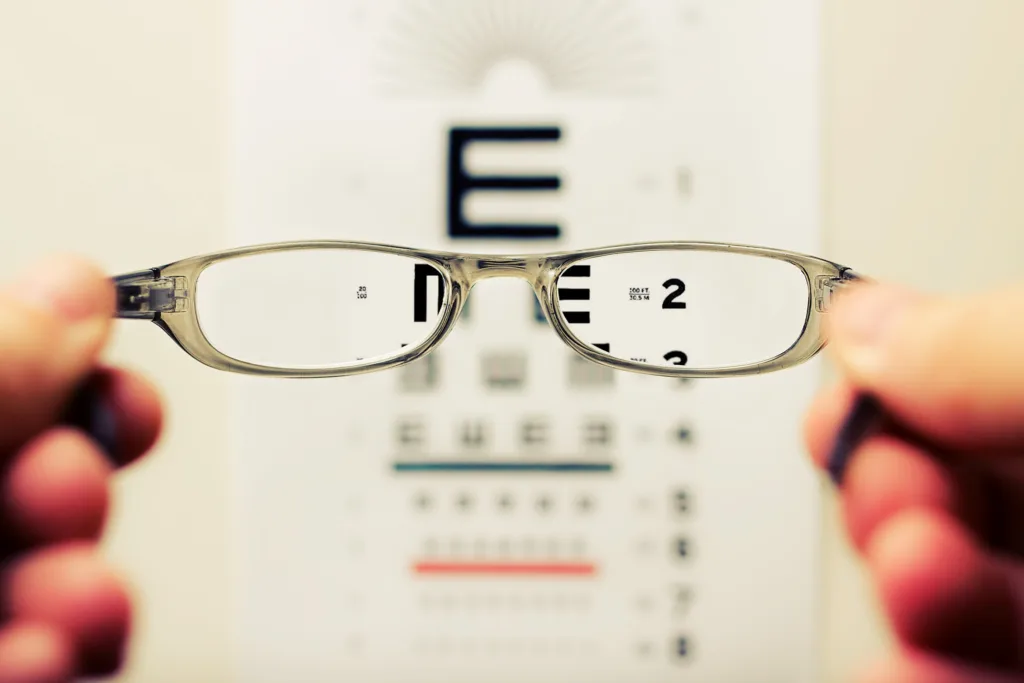When it comes to ocular deviations, two primary types are seen in patients: the tropia and the phoria. These terms are often used interchangeably, but there are some key differences between the two.
A tropia is a misalignment of the two eyes that is present even when the patient is looking with both eyes uncovered. This means that one eye is not pointing in the same direction as the other eye. Tropias can be classified based on the direction of the deviation, such as esotropia (inward turning of the eye), exotropia (outward turning of the eye), and hypertropia (upward turning of the eye).
On the other hand, a phoria is a misalignment of the eyes that is only seen when binocular viewing is broken. This means that the eyes are able to work togeter to maintain alignment when both eyes are open and looking at the same object, but the alignment breaks down when one eye is covered or when the two eyes are looking at different targets. Phorias are often described as being latent or hidden deviations because they are not seen during normal binocular viewing.
It’s important to note that a phoria can sometimes break down into a tropia. This means that a patient may be able to keep both eyes aligned most of the time, but at certain times, one eye may deviate from its natural position. This is known as an intermittent tropia.
Both tropias and phorias can cause symptoms such as eye strain, headaches, and double vision. Treatment options for these conditions depend on the severity of the deviation and may include corrective lenses, vision therapy, or surgery.
While both tropias and phorias involve misalignments of the eyes, the key difference between the two is that a tropia is always present, while a phoria is only seen when binocular viewing is broken. Understanding these differences can help eye care professionals make accurate diagnoses and develop effective treatment plans for patients with ocular deviations.
What Is Difference Between Tropia And Phoria?
Tropia and phoria are two types of ocular deviations. Tropia is a type of eye misalignment that occurs when a patient is looking with both eyes uncovered. It is a noticeable misalignment, and the patient is unable to align their eyes correctly. On the other hand, phoria, also known as a latent deviation, is a type of eye deviation that only apears when binocular viewing is broken. In other words, it is a deviation that can only be detected when one eye is covered, and the other eye has to work harder to maintain binocular vision. Phoria is a less noticeable deviation, and the patient can align their eyes correctly when both eyes are uncovered. It is important to note that both tropia and phoria can be treated with the help of vision therapy, prism lenses, and surgery in severe cases.

What Is Phoria?
Phoria is a medical condition that refers to an eye misalignment where the eyes are not perfectly aligned when they are at rest. It is a condition that is not usualy noticeable when both eyes are open and functioning together, but it can become apparent when one eye is covered or when looking at different targets. Phoria can be detected by using prism lenses, red/green glasses, or Maddox rod. This condition can cause symptoms such as eye strain, headaches, blurred vision, and double vision. It is important for individuals with phoria to get a proper diagnosis and treatment from an eye care professional.
What Is A Tropia?
Tropia is a medical term used to describe a condition in which the eyes deviate from teir normal position with respect to the line of vision when the eyes are open. It is also known as strabismus, which is a condition in which the eyes are not properly aligned with each other. There are two types of tropia: esotropia and hypertropia. Esotropia is a condition in which one or both eyes turn inward, towards the nose, while hypertropia is a condition in which one or both eyes turn upward. Tropia can be caused by a variety of factors, including muscle imbalance, nerve damage, or problems with the brain. Treatment for tropia may include corrective glasses, eye exercises, or surgery, depending on the severity of the condition.
Can A Phoria Become A Tropia?
A phoria can become a tropia. In fact, a phoria can break down into a tropia, which can cause double vision. An individual with a phoria can keep both their eyes aligned, but at times one eye may deviate. However, in an intermittent tropia, the individual’s eye may deviate occasionally, causing double vision. Therefore, it is essential to diagnose and treat phorias to prevent them from progressing into tropias.
Conclusion
Tropia and phoria are both ocular deviations that can affect a person’s vision. Tropia is a misalignment of the eyes that is present even when both eyes are uncovered, while phoria is a misalignment that is only seen when binocular viewing is broken. While both conditions can cause double vision, a phoria can sometimes break down into a tropia, leading to intermittent deviations. It is important for ayone experiencing symptoms of ocular deviation to seek the advice of an optometrist or ophthalmologist to determine the underlying cause and appropriate treatment. Understanding the differences between tropia and phoria is a crucial step in maintaining healthy vision.
